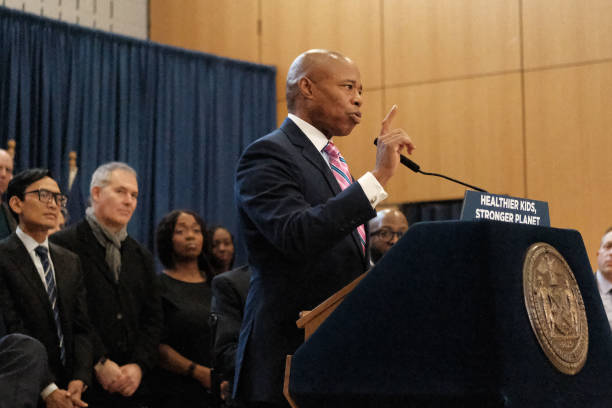Opioids are killing Americans – Who allowed that to happen?
Last week, Attorney General Merrick Garland answered questions from the US Senate Judiciary Committee. In a rare act of functionality, the hearing actually was a conversation- Garland answered a few questions instead of hiding behind phrases such as “top secret”, “ongoing investigation”, and “I have a plane to catch” (see Christopher Wray). There were some bad answers and priorities seem a bit screwed up, but at least we got some information.
One significant line of questioning came from Sen John Cornyn and Sen Lindsey Graham. It was on the opioid crisis and government enforcement. Graham, while hitting the administration on failing to garner the help of the Mexican Government and maintaining American border security, also made the point that government actions were not seriously mitigating the crisis. Thanks for the tip, Lindsey. “The Government is failing to resolve the problem” might as well be carved in marble at our nation’s capital.
Hundreds of thousands of Americans are dead due to the opioid crisis. There is likely not a family in this country that has not been touched by this plague. It touches people (often young people) from all walks of life. Looking back a few years ago many of us heard stories of student athletes suffering injuries that led to opioid addictions. Football stars devolving into street junkies in a matter of years. It even affected professionals. Huge names such as Tiger Woods and Brett Favre are a few that fell victim to opioid addictions. At least they are alive, unlike Derek Boogaard (NHL) and Tyler Skaggs (MLB).
Speaking as a parent: Is there a mother or father out there today that doesn’t worry when their kids go to a party? Pills seem omnipresent among American youth. Is one pill laced with fentanyl going to end my kid’s life before it truly starts? It happens, and it is scary, despite the left-wing talking points that the fear is overblown. Stats from the National Institutes of Health show that opioid deaths have gone from under 10,000 in 2001, to over 21,000 in 2011, to over 80,000 in 2021. And that is with the proliferation of Narcan readily available all over the country to stop overdose deaths.

One of the headlines from Garland’s exchange with the Senators was his claim that the opioid crisis was “unleashed on purpose” on unsuspecting Americans. Garland was referring to the cartels, but that is not the only culprit. The American Government had a pretty significant and morally unconscionable part in the opioid crisis. The FDA in particular had never truly been held to account for its action in promoting, or lack of action in preventing, this national tragedy. Every version of opioid narcotics prescribed by a doctor in this country has one thing in common. They were approved by the FDA.
According to the U.S. Substance Abuse and Mental Health Services Administration, a full 80% of all users arrive at heroin after abusing opioid painkillers such as OxyContin, Percocet, and Vicodin. And according to the National Institute of Drug Abuse, one in 15 people who take nonmedical prescription painkillers will try heroin within the next 10 years. With stats like that why would anyone prescribe opioid based painkillers? Our guess would be money… a lot of money. The FDA rubber-stamped these drugs and turned a blind eye when the amount prescribed grew to an epidemic.
As pharmaceutical companies created more and more opioid-based medicines and encouraged doctors to prescribe these dangerous drugs, what did the Food and Drug Administration do? Not much. The President’s Commission on Combatting Drug Addiction and the Opioid Crisis found that the opioid crisis was caused in part by “inadequate oversight by the Food and Drug Administration.”
Even after it became clear that the opioids were becoming a problem, as student athletes were showing up in morgues due to overdose deaths, as America’s heroin usage skyrocketed, the FDA kept right along approving and thereby promoting these drugs. It okayed the use of oxycodone for lower back pain. Lower back pain seems like a fact of life once you hit your mid-forties. Maybe common sense would say heroin-lite is not the answer.
Perhaps there is more to it than just poor oversight. David Kessler, the FDA director from 1990- 1997 was on the board of Ellodi Pharmaceuticals. Jane Henney, the FDA director from 1999-2001 is on the board of Astrazeneca PLC, and the China Medical Board. Mark McClellan, the FDA director from 2002-2004 is an independent director on the board of Johnson & Johnson. His successor Lester Crawford was indicted for conflict of interest violations and not disclosing the ownership of stocks regulated by the FDA. These individuals were running the FDA as opioid drug approvals were being handed out.
None of these public servants are accused of trading FDA opioid approvals in exchange for jobs. Looking at resumes, many seem like qualified people who did some good work. But the appearance of impropriety combined with the irrational approval of these opioids certainly raises some questions about the relationship between the government approval process and some nice retirement gigs. It happens quite frequently. In a 2016 study in The BMJ, researchers examined the job histories of 55 FDA staff who had conducted drug reviews over a 9-year period in the hematology-oncology field. They found that 15 of the 26 employees who left the agency later worked or consulted for the biopharmaceutical industry. One wonders how there could be any legitimacy to the process with a stat like that. Especially when there are studies that show very little scientific data to base the FDA’s opioid approvals on.
And its not like the federal government doesn’t know that these pharmaceutical companies are throwing money around to get their way. In 2020, the Department of Justice prosecuted Purdue Pharma for a wide ranging kickback scheme. The US Attorney for New Jersey spelled it out very clearly, “Purdue admitted that it marketed and sold its dangerous opioid products to healthcare providers, even though it had reason to believe those providers were diverting them to abusers. The company lied to the Drug Enforcement Administration about steps it had taken to prevent such diversion, fraudulently increasing the amount of its products it was permitted to sell. Purdue also paid kickbacks to providers to encourage them to prescribe even more of its products.” Don’t worry, no federal employees were hurt in the prosecution of this case.
So as the Senate and Department of Justice converse, and billions of tax dollars are spent on futile programs to fight opioids, remember: the people debating a solution are part of the same federal government that created this problem to begin with.
Why does it feel like “spend more money” will be the solution they arrive at?
Thanks for reading The Ops Desk!









